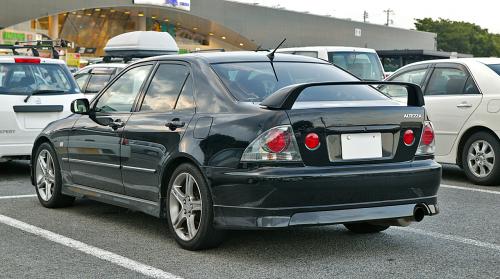Zooming In on the Toyota Altezza
 If there’s one place where the Toyota Altezza shines, it’s on the racetrack. It’s really made for running fast—it’s a sport sedan, after all.¬ One Altezza that made it to racing history books is the one used by autoparts company and drag racing team HKS in Japan in 2004. It wasn’t their main racing unit—they had been racing an S15 Silvia but in the last two rounds of the competition, the team was told by management to use the Altezza. The car was a new face on the field, and it was a nice, fresh one to see.
If there’s one place where the Toyota Altezza shines, it’s on the racetrack. It’s really made for running fast—it’s a sport sedan, after all.¬ One Altezza that made it to racing history books is the one used by autoparts company and drag racing team HKS in Japan in 2004. It wasn’t their main racing unit—they had been racing an S15 Silvia but in the last two rounds of the competition, the team was told by management to use the Altezza. The car was a new face on the field, and it was a nice, fresh one to see.The Altezza, whose US-based counterpart is the Lexus IS300, is a solid performer both on- and off-track. Japan’s Altezza has a powerful 2.0-liter engine with inline four 3S-GTE motor, same as the second generation MR-2’s. Sharing the same engine model means parts are easy to come by should the need arise, and having an engine fit for a racecar means the car can be modified and tuned to go faster and perform better. Which is what the HKS team did: they toughened up the vehicle’s bottom end with their own HKS hard parts and expanded the engine displacement to 2.2 liters. They installed a new GT2835 ball-bearing turbo unit, strengthened the actuator, and added in an EVC V-boost controller, and modified a few other innards to come up with a rear-driven monster racer that can deliver up to 473 horsepower.
Horsepower isn’t enough to make a car drift along perfectly, and the HKS team’s Toyota Altezza had to undergo several suspension adjustments between practice rounds to fit the driver’s preference. A miscalculated suspension in a new vehicle could disorient the driver and create some—or a lot—of sliding trouble on the track. Calibrating the coilovers and sway bars according to how the driver wants them is important. Unfortunately amidst all the modifications, the driver had a not-so-easy time handling the car for the track yet, and they failed to qualify.
What has happened to the Toyota Altezza drift car since? Even when the team stopped participating in the racing circuit, they still continued to develop it into a full-blown race car. The team has been planning to join a couple of drift events using the car, and has done a lot to it to make sure it makes the mark. The car now boasts of 560 horsepower; has a 3S-GTE BEAMS (Breakthrough Engine with Advanced Management System) engine; GT3037S turbo; a customized downpipe and exhaust system; custom intercoolers; TRD radiator with air-separator tank; new racing fuel pumps; and braided fuel lines.
The suspension system was calibrated using custom HKS Hipermax D adjustable dampers. The front and rear damper mounting points are customized as well and have been repositioned. The car has been equipped with custom antiroll bars and fitted with custom carbon doors, panels, LED rear lights, side mirrors, and Varis carbon hood. If you’re a racing enthusiast and would like to see how the modified Toyota Altezza performs, watch out for Team HKS and prepare to be blown away.
Comments